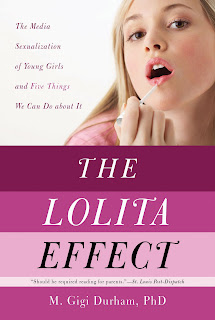I ordered my wife our anniversary present for the Dixie Chicks, who, I learned, would open for The Eagles, in the inaugural event at a brand new venue.

Linked by pedestrian space to Staples Center and Los Angeles Convention Center, and new hotels in the works, the developer hopes to turn this into an entertainment nexus. To add to its distinction, it has banned the article "the". Both big attractions, the sports arena and the music hall, bill themselves sans article.

Prior to its renovation, the area featured transient hotels populated by typical raza underclass. When one of those hotels was hit by a rare tornado thirty years ago, I overheard two women outside a ballet studio discussing the news. One remarked to my chagrin, "thank heavens it didn't hit anywhere important!" I wondered if one of those young mothers were among the post middle-age mothers surrounding me at the Nokia for the Dixie Chicks.
I sat row Z last seat on the right and thought I'd be the only mexican in the house when behind me sat a couple fresh out of Sinaloa. Someone unkind would say a couple of chuntys, but they looked right in style with the crowd. I chatted them up a bit, turns out the fellow knows all the words to the Eagles' music and sang loudly the entire performance. Con gusto. Lots of gusto.
Getting to the Nokia is half the confusion. There are new street names that my Prius GPS hasn't yet learned, so navigation is catch-as-catch-can luck. The traffic uniforms answered a query politely, but wrong, leading me through a long way around maze to a point half a block from my starting point, faced with a left turn against oncoming traffic.
Arriving by car directs one to the rear entrance. The neon lit mall and pedestrian space sit somewhere beyond the entrance. Parkers enter directly into the door into a cavernous auditorium. Photographers experience the oppression of no cameras allowed, and the injustice of ubiquitous cell phones twinkling in the darkness like thousands of Tinkerbells.
Nothing distinguishes the interior of the hall. Flat black walls surround the immensity of engineering and construction--no support beams obstruct anyone's view, it's one huge tent. And the show goes on. Sadly, the Dixie Chicks had a bad night. The women sang their bits, the backup guys played theirs at the same time but they never hit it. The Eagles offered a complete performance, satisfying. It's the first time I'd heard their music in one sitting like this and recognize they've earned their reputation. The crowd gave them the kind of wild applause Esa Pekka Salonen got from his Beethoven 7th last month, but with more gusto. That was the best part.
My least favorite experience and this will keep me away for a long time, are the tightly packed, endless rows. To their favor, the Nokia designers leave room enough so my knees don't hit the seatback (unlike many Disney Hall seats). While the absence of aisles means long pan shots for awards t.v. shows, plus hundreds more seats to sell, the uninterrupted rows make a nuisance of thirsty fans. Throughout both performances people trekked from mid-aisle, fifty seats away, to me. Minutes later, they reappeared at my right with two large cups of brew in hand. Across the house the rows did the wave, it wasn't just my row. The Nokia is just too tough a row to how, so I have opted out until something really good comes along. Like a Beatles reunion.
Bits & Pieces. Late news FYI from Berkeley and Los Angeles.Daniel Alarcón announces South America: Untold Stories.
Wednesday October 24, at UC Berkeley, Ted Genoways (Virginia Quarterly Review) Jon Sawyer (Pulitzer Center for Crisis Reporting) and Alarcón will be hosting a panel discussion called South America: Untold Stories. We'll be presenting the current issue of The Virginia Quarterly Review entitled "South America in the 21st Century."
Panelists include:
Filmmaker Gabrielle Weiss screening her film on the Ghost Train of Buenos Aires
Journalist Pat Joseph discussing the environmental impact of soy production in the Brazilian Amazon
Journalist Kelly Hearn exploring Camisea, Peru's largest natural gas deposits, and the race to control it
The work of Etiqueta Negra journalists will also be presented.
South America: Untold Stories
Geballe Room, 220 Stephens Hall
Townsend Center for the Study of the Humanities
UC Berkeley
Oct 24, 6pm
For more information about the magazine, please see www.vqronline.org/south-america*This event is sponsored by the UC Berkeley Center for Latin American Studies*www.danielalarcon.comThe Mystery Bookstore
36-C Broxton Avenue
Los Angeles, California 90024Phone: 310/209-0415 | 800/821-9017
Fax: 310/209-0436
AUTHOR SIGNINGS AND EVENTS
Saturday, October 27 at 2:30 p.m.Saturday afternoon begins with a celebration of Latino noir, as local favorite Alex Abella and best-selling Bolivian novelist Juan de Recacoachea discuss their books.
HAVANA NOIR is the 17th in Akashic's series of "Noir" anthologies.
ALEX ABELLA discusses and signs HAVANA NOIR, edited by Achy Obejas
Akashic Books, $15.95 (trade paperback original) and JUAN DE RECACOACHEA discusses and signs AMERICAN VISA. Akashic Books, $14.95 (trade paperback original)
AMERICAN VISA is one of the very few Bolivian novels ever to be translated into English. Unemployed English teacher Mario Alvarez goes from the country to La Paz in an effort to get a visa to visit his son in Miami. But his paperwork is faked, and he needs better documents – which plunges him into an underworld of desperate men and even more dangerous women.
Add your own late-breaking announcements here. Let's see what's happening in your neck of the woods, gente! At any rate, that's Tuesday, the 23d of October 2007, a day, like any other day, and that's not so bad, que no?
See you next week.mvs Carol Midgely looks at The Lolita Effect, by M. Gigi Durham, in The Times: "Last Halloween, Gigi Durham opened her front door to find a five-year-old girl standing on the doorstep. The child was wearing a boob tube, gauze miniskirt, platform heels and glitter eye-shadow. “I’m a Bratz!” she declared. Durham was put more in mind of a child prostitute that she had once seen in Cambodia. There wasn’t that much to choose between the two girls’ outfits.
Carol Midgely looks at The Lolita Effect, by M. Gigi Durham, in The Times: "Last Halloween, Gigi Durham opened her front door to find a five-year-old girl standing on the doorstep. The child was wearing a boob tube, gauze miniskirt, platform heels and glitter eye-shadow. “I’m a Bratz!” she declared. Durham was put more in mind of a child prostitute that she had once seen in Cambodia. There wasn’t that much to choose between the two girls’ outfits.



















